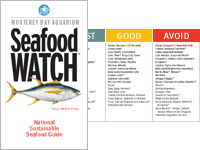The Wrack
The Wrack is the Wells Reserve blog, our collective logbook on the web.
The Wrack is the Wells Reserve blog, our collective logbook on the web.
Since 2010, the Wells Reserve has been working with partners to develop an inventory of stream barriers in the small coastal watersheds of York County. These are usually man-made structures that prevent the upstream or downstream movement of fish and other aquatic organisms, due to the fact that stream crossings were not historically designed with fish in mind. The impacts of stream barriers are particularly severe on migratory fish such alewives or salmon, which move from the ocean into rivers to reproduce.
It’s that time of year… fall is in the air and (if you’re a brook trout) love is in the air too! October and November is prime spawning time for Eastern Brook Trout. They’ve been fattening up all summer on aquatic insects. Now the mature females have bellies full of eggs and are looking for a spots with cold, clear water and loose, clean gravel where they can make their nests, called redds.
The Shoreys Brook dam came out in November 2011, and since then the brook has been steadily carving its way through the sediment that has collected for over a century in the impoundment. Vegetation is starting to take hold in places, but it will be a few years before it begins to look like anything but a large mud pit. As old sediment flushes away, older substrates begin to emerge along the stream bottom, showing signs of what the brook once looked like. Gravel, cobble stones, and even boulders can now be seen littering the stream, which is a positive sign for the restoration team. Rainbow smelt are looking for just this type of stream bottom to lay their eggs on in the early spring.
In the summer of 2009, Marissa Hammond came to us as a wide-eyed freshman with little experience in research science. She has blossomed into a NOAA scholarship award winner who has been accepted into a highly respected graduate program in fisheries management and policy.
 For years now, we've been handing out Seafood Watch pocket guides so people can make more careful decisions about what fish and shellfish to buy or avoid. The Monterey Bay Aquarium publishes regional guides, so the information is tailored to residents of the northeast, for example.
For years now, we've been handing out Seafood Watch pocket guides so people can make more careful decisions about what fish and shellfish to buy or avoid. The Monterey Bay Aquarium publishes regional guides, so the information is tailored to residents of the northeast, for example.
Now the aquarium has made ocean-friendly seafood recommendations even more convenient for smartphone users with its Seafood Watch app for iPhone or Android. At our house, the printed "pocket guide" often lived under a magnet on the refrigerator or got pierced by a thumbtack on the bulletin board, rarely making the trip to market. Now we will have the critical data in hand, as our mobile devices don't get left behind.
The Maine Road-Stream Crossing Survey determines where poor design or degraded condition of road culverts hampers the ability of fish to access upstream or downstream habitat. This information helps project partners to set priorities for restoring critical fish habitat sites.
For this project, Wells Reserve workers visited all road-stream culverts along the Kennebunk River, from its mouth on the border of Kennebunk and Kennebunkport to its far reaches in Lyman.